Merry Christmas and a Happy New Year to the HIStalk crowd. I wish you the joys of the season!
News 2/26/16
Top News
The White House announces several commitments to its Precision Medicine Initiative call to action, including:
- The Advisory Board Company will create APIs for up to five pilot sites interested in building FHIR-based applications.
- Allscripts, Athenahealth, Drchrono, Epic, and McKesson will pilot open APIs that will allow patients to contribute their EHR data to research in “Sync for Science” pilot projects.
- The CRISP HIE will enable consumer “data donation” to support research.
- Get My Data will initiate a “virtual march” of consumers via pop culture events, social media, and media campaigns.
- Hackensack University Medical Center will adopt FHIR and open APIs for patient access.
- Intermountain Healthcare will create a patient portal for cancer genomic data.
- Ochsner Health System will expand its wearables data pilots.
- PicnicHealth will publish a guide explaining how consumers can get access to their data and will create a Web-based portal for requesting data from the country’s 500 largest health systems.
- PCORnet will help patients get access to their EHR data and contribute it for research.
- Sage Bionetworks will create a way for study patients to contribute data for research.
- St. Joseph Health will make data from Allscripts and Meditech available through an API and allow patients to see, edit, and contribute their own data.
- Surescripts will give patients participating in the first precision medicine cohort the ability to contribute their medication and health information.
- University of California Health System will give patients tools to download their information from all five of its medical centers and to share the information with providers and researchers. It will also develop a Blue and Gold Button, working with Cisco on a standards-based interoperability platform.
- Validic will give users an opt-in form that will allow them to donate their patient-generated data to researchers.
- Yale New Haven health will give patients access to their full medical record and allow them to share or donate their information.
- New York Genome Center will use IBM Watson to generate cancer insights.
- Inova Health System will create a $100 million precision medicine venture fund.
- UPMC will make its legacy EHR data available to applications and services via a FHIR API.
- University of Arizona Health Sciences will spend $22 million to expand its open-source analytic methods for disease-associated gene expression changes.
Reader Comments
From Sage on the Stage: “Re: same old HIT problems. Usability, interoperability, and security require addressing socio-technical challenges that start-ups and politicians are reluctant to admit, much less address. For those going to the HIMSS conference, ask vendors the hard questions.” Here’s the list from SOTS:
- Do your system designers observe real clinician users in their busy clinical setting, recording how many errors they make, the problems they have finding data, or workarounds used in providing care to someone’s mother? If you have conducted those observations, what are you doing to correct the problems? If not, do you have any free tee shirts?
- How does your EHR identify patients from disparate organizations, reconcile clinical terminologies, and normalize the clinical and administrative data before importing it and integrating it into your EHR and displaying it to clinicians? If so, can you connect me with a customer using those features? If not, do you have any free golf balls?
- Does your product use two-factor authentication for remote access? How do you ensure that clients have implemented all the appropriate security precautions and most recent application and OS updates? Do you perform announced penetration tests on your clients’ networks and databases?
From Boy Wonder: “Re: HIMSS conference. Today in our company-wide prep meeting we reviewed your ‘booth rules for vendors’ rant from a few years ago … such good content. Hopefully our team members will learn from it and not screw up!” It was a culmination of my life’s work a couple of years ago to capture the fleeting image of every single employee in one vendor’s booth simultaneously tuning out passers-by while obsessing over their phones. I can’t top that, but I will be on the prowl for inhospitable booth behavior that disrespects attendees and robs employers. I would offer to mystery shop for companies interested in my blunt, objective opinion, but I fear I would be overwhelmed with requests.
From Blown Cover: “Re: HIMSS spelling. It’s crazy after decades that people in the industry don’t know the difference between HIMSS and HIMMS. Come on, people – get it together!” Googling “HIMSS16” gives 5,410 results, while searching for just “HIMMS” returns 577,000 results. Even hashtag “#HIMMS16# “ turns up usage by tweeters like CHCF Innovations, Carestream, GetMyHealthData, CSC Health, and Cylance. You might find this startling lack of attention to detail is concerning given that, by definition, it involves companies offering patient-impacting technology products.

From Gone Guy: “Re: HIMSS and SIIM. Last time I checked they dealt in the digital world.” The stock photography doctor not only is peering intently at a now-antiquated film, she’s got a giant, turquoise syringe handy should she feel the need to inject something unsterile into someone. I can only imagine how often the HIMSS-SIIM Enterprise Imaging Workgroup’s name will be mangled into HIMMS-SIMM.
HIStalk Announcements and Requests


We provided an Osmo learning system in funding the DonorsChoose grant request from Ms. Murphy in Wisconsin, who emailed, “As you look around the room when students are using these materials, you can see the excitement on their faces, how highly engaged they are in the math, and the social skills that are being developed. You can hear mathematics vocabulary being used in their discussions and how they work together to solve problems, whether they are academic or social.”


We also provided math picture books for Ms. Schmidt’s Indiana kindergarten class, which she says are so popular that the kids are reading them outside of their math workshop sessions.
This week on HIStalk Practice: The US Oncology Network and McKesson Specialty Health help oncologists move to value-based payment models. Family Health Care of Siouxland sees success in depression screening with new check-in tablets. : Andy Slavitt addresses physician burden, MACRA next steps at AMA conference. MBS/Net merges with Medsphere. KP Northwest enters the standalone – and telemedicine-friendly – clinic market in Portland. Georgia rolls out HIV telemedicine program at its public health clinics.
This week on HIStalk Connect: Fitbit shares fall 20 percent on low Q1 earnings and revenue guidance. Insurance startup Oscar Health raises a $400 million private equity round to expand its geographical footprint. Crisis Text Line releases a dataset containing more than 13 million de-identified text messages between its crisis counselors and teens that use the service. Opternative raises $6 million to ramp up its online eye exam business.
Welcome to new HIStalk Platinum Sponsor Ability Network. The Minneapolis-based company has for 20 years been helping providers and payers simplify the administrative and clinical complexities of healthcare through innovative applications and data analytics. It has helped hundreds of health IT vendors connect to Medicare and commercial payers, giving easy EDI payer access and embedding eligibility and claims management directly into the vendor’s software. Hospitals can take advantage of platforms for Medicare billing management, FISS/DDE connectivity, all-payer eligibility and claims, and Medicare claims submission and remittance advice. The company has grown tremendously, fueled by over $500 million in capital investment and several notable acquisitions, the most recent being Thursday’s acquisition of RCM and analytics services vendor G4 Health Systems. Industry long-timer, pharmacist, and former McKesson President and CEO Mark Pulido is Ability’s CEO and board chair. Thanks to Ability Network for supporting HIStalk.
The folks at Peer60 helped me survey C-level executives from Epic-using organizations to create a free report, “Epic: the cold hard facts.” I came up with questions I always wanted to ask Epic sites. Are provider executives willing to speak up if they find Epic-related issues that could impact patient safety? Does Epic provide competitive advantage? Do Epic-using CIOs prefer Epic sites when looking for a new job? Did Epic go in on budget and do CFOs think it’s worth the cost? Are customers happy with Epic’s interoperability? It’s a free download – the form asks for basic information just for my use in understanding who is reading it, but you can enter dummy data if you aren’t comfortable sharing with me. It’s been crazy trying to get this finished during all the HIMSS hoopla and I’ve already noticed that I made a couple of aggravating minor typos, so forgive me for those. Free really is free: there’s no advertising, no charging vendors for copies, and no behind-the-scenes selling of data. Thanks to the provider executives who participated.

I’m heading to Las Vegas early this weekend, just to get settled in before the wave of HIT immigrants overwhelms the baggage carousels, taxi lines, and check-in desks. Nothing really happens until Monday, so I’m hoping to finally take a breath and get into HIMSS mode after a way too busy February.
Webinars
None scheduled soon. Contact Lorre for webinar services. Past webinars are on our HIStalk webinars YouTube channel.
We’re running a HIMSS special on webinars – 25 percent off produced and two-for-one on promoted. Contact Lorre or see her at our booth next week.
Here’s this week’s webinar, sponsored by LifeImage, titled, “Completing Your EMR with a Medical Image Sharing Strategy.”
Acquisitions, Funding, Business, and Stock
Google’s DeepMind Technologies forms DeepMind Health, offering two apps it acquired. Streams, for acute kidney injury detection, was developed by Royal Free Hospital London, while clinical task management and communication app Hark was created by an Imperial College London team. Neither app uses DeepMind’s machine learning or artificial intelligence capabilities – these are apparently simple, hospital-built apps that don’t do a whole lot despite the Tweeters wetting their pants in anticipation of Google mounting an undeclared challenge to IBM Watson.
E-prescribing and electronic prior authorization network vendor CenterX raises $3.3 million in funding.
UPMC makes an unspecified investment in Vivify Health and will implement its care management and patient engagement technology. UPMC’s investment completes a round that was started in November 2014, increasing the company’s total to $23.4 million.
Meditech solutions provider Park Place International will rename itself CloudWave.
Minneapolis-based employee health benefits management technology startup Gravie lays off 21 employees – 25 percent of its workforce, with CEO Abir Sen explaining, “It’s a bad market out there and we need to invest in growth.” Crunchbase reports that the company has raised $25.6 million, with its last round of $12.5 million being completed in April 2015.
VitalWare receives an unspecified growth investment from F-Prime Capital Partners, which gets two board seats.
Medsphere merges with EHR implementation consulting firm MBS/Net.
Sales
The State of Oklahoma chooses Orion Health’s Healthier Populations Solutions Suite for Health-e Oklahoma.
Mission Health (NC) selects PeraHealth’s clinical surveillance solution.

Maine Medical Center (ME) chooses Lexmark’s accounts payable automation, which includes Perceptive Intelligent Capture and Perceptive Content.

University of Kansas Hospital (KS) selects Cerner’s HealthIntent population health management system. I was distracted by the press release’s use of two pompous substitutions (“leverage” and “utilize”) for the perfectly serviceable “use,” but I’ll give them a bye for whipping out “proactive” a couple of times, which is two too many.
Intermountain Healthcare will use Ayasdi’s clinical variation management software.
People

LifeImage promotes Jim Phillips to SVP.

Orion Health prometes Wayne Oxenham to president of its North America operations.
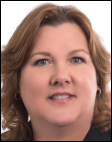
Huron Consulting Group hires LaDonna Sweeten (Leidos Health) as managing director.

PatientSafe Solutions promotes co-founder Si Luo to president and CEO.



HIMSS announces pre-conference organizational changes: HIMSS Analytics EVP John Hoyt retires, Blain Newton is promoted to replace Hoyt, and HIMSS EVP/COO R. Norris Orms announces his retirement.
Announcements and Implementations
Catalyze announces Stratum, a compliance layer for healthcare infrastructure.

Aprima adds Chronic Care Management functionality to its EHR.
American Well releases a software development kit that allows providers to embed the company’s online doctor visit technology into their mobile apps.
LogicStream Health adds an executive overview area to its clinical process measurement platform, allowing leaders to monitor care activity at levels ranging from specific conditions (such as CAUTI or VTE) to overall quality.
CHIME announces a “unique partnership” with OpenNotes, with the press release babbling endlessly without actually saying what the partnership involves until Paragraph 7, which finally gets to the point in explaining that CHIME’s task is to “bring greater awareness.”
First Databank announces its OrderSpace CPOE medication ordering content system, with McKesson Paragon being the first inpatient system to make it available to users.
Geisinger spinoff xG Health Solutions will use Cerner’s HealtheIntent population health management platform, while Cerner will use xG’s clinical content in its HealtheCare and HealtheAnalytics solutions.
The Partnership for Health IT Patient Safety releases Toolkit for the Safe Use of Copy and Paste.
Elsevier lists its activities at the HIMSS conference, including serving as the red carpet sponsor of HIStalkapalooza. I’ve worn the sunglasses they provided last year in Chicago countless times while running, sunning, or doing yard work — I call them my Elsevier safety glasses.
Government and Politics
ONC announces its Interoperability Proving Ground, a community for sharing information about interoperability projects.

The National Institutes of Health says during Thursday’s White House summit on precision medicine that it hopes to be gathering data on 1 million people by 2019, also announcing that it will fund a Vanderbilt University study involving Verily (the former Google Life Sciences) to determine how to attract those volunteers.
Army veteran Dennis Magnasco spent two days trying to schedule an appointment with the VA clinic in Bedford, MA, but could never get through the phone tree to reach an actual human. He works for Rep. Seth Moulton (D-MA), who filmed Magnasco’s attempt and posted it to Facebook, where it received more than 2 million views. The outcry motivated the Bedford clinic to fix its PBX and earned Moulton several new sponsors for his Faster Care for Veterans bill that would require the VA to run an 18-month pilot project in which veterans can self-schedule using a smartphone app. Moulton criticized the VA’s plan: “They were planning to spend $623 million developing their own app. This is available today. God knows how long it would take them to spend that.” He says the VA just likes building its own proprietary systems, adding, “They gave a variety of silly excuses.”
Privacy and Security
A law professor’s USA Today op-ed piece that appears to be satirical proposes going back to paper to thwart hackers, explaining:
The truth is, paper records are inherently more secure. To steal 10 million electronic user records from a government agency, all you might need is a cracked password and a thumb drive. To steal that many records on paper, you’d need a fleet of trucks and an uninterrupted month. And ransomware wouldn’t work on paper records. What would you do – put a padlock on the file cabinets and demand ransom for the key? And often, putting things on computers is a crock anyway. Electronic medical records, touted as saving money and streamlining care, are a major cause of physician burnout. It’s gotten so bad that some hospitals actually advertise the lack of electronic medical record systems as a selling point in recruiting doctors. If I were running an intelligence agency, I’d have all my important stuff done in handwriting or on mechanical typewriters and distributed in sealed envelopes. If I were setting up a voting system, I’d use paper ballots. And if I were running a hospital, I’d seriously consider doing everything on paper. There’s a place for computer records, of course. But for things that really matter and that need to be genuinely secure, we should try a more advanced technology: Paper and ink. Take that, hackers.
A Venafi survey finds that CIOs are not properly managing security keys and certificates. You will no doubt be shocked to learn that Venafi sells tools to secure keys and certificates. The survey suggests that more hackers are attacking using untrusted keys and certificates that can be bought on the black market for around $1,000 to encrypt their evil-doing traffic.
Pro football player Jason Pierre-Paul sues ESPN and one of its reporters for violating his privacy in running a photo of a surgery schedule proving that he had blown off a finger playing with fireworks on July 4, 2015. Jackson Memorial Hospital (FL) fired a nurse and a secretary earlier this month for sending the information to ESPN. JPP is suing under a Florida health professions regulation, which seems to hold little chance for legal victory since, like HIPAA, it covers providers but not sports networks running celebrity news.
Technology
Apple sold 11.6 million Watches in 2015, placing it in wearables third place behind Fitbit and Xiaomi. I knew little about China-based Xiaomi, but learned that its $15 Band Plus Pulse (pictured above) added a heart monitor to its existing step counting, sleep analysis, incoming call alert, and integration with the iOS Health app.
NHS England Nursing Technology Fund provides Princess Alexandra Hospital with $1.4 million to purchase Nervecentre’s mobile clinical platform software for iPad-based documentation.
Other
An analysis of LinkedIn’s share free-fall says the company’s problems are fundamental to its business model as somewhere between business card holder and spam delivery service: its only content is generated by self-promoting but sporadic users (often only when they’re looking for work) who are then pestered endlessly by recruiters. The article says LinkedIn should stop rewarding bad user behavior, allow users to block unwanted communications, and integrate better with email.
A Pennsylvania VA nurse is charged with assisting in an emergency surgery while drunk. The nurse, who says he forgot he was on call, drove recklessly from a casino bar and was caught on hospital security video stumbling into the facility. He then had problems logging in to the OR computer and documenting the procedure.
Sponsor Updates
- The Atlanta Business Chronicle interviews Liaison Technologies President and CEO Bob Renner.
- Allscripts announces that its APIs have been used to exchange data one billion times in three years.
- HCI Group partners with Securonix to enhance its security offerings.
- Extension Healthcare will add AirStrip’s mobility platform to its Engage Mobile, providing event notifications and waveforms
Blog Posts
- Are You Ready to Explore a New Dimension at HIMSS16? (Medicity)
- How Can You Defend Against Cyber Vigilantes? (ID Experts)
- Protecting Against Ransomware (Impact Advisors)
- Understanding Your Customer’s Stage in Their Healthcare Journey (Influence Health)
- The Network Effect is Coming to Healthcare (Ingenious Med)
- Healthcare Providers’ Population Health Challenges in Managing Risk and Moving to Value-Based Care (Forward Health Group)
- Three Opportunities to Enhance Payment Security at Your Practice (InstaMed)
- The Role of Emotional Intelligence in Medicine (MedAptus)
- Eight Steps for Improving Patient Collections (Navicure)
- Tips for your Epic phases of care implementation (Nordic)
- Future of Interoperability (NVoq)
- Destination HIMSS16 – 7 Things to Know Before you Go (Oneview Healthcare)
Contacts
Mr. H, Lorre, Jennifer, Dr. Jayne, Lt. Dan.
More news: HIStalk Practice, HIStalk Connect.
Get HIStalk updates.
Send news or rumors.
Contact us.




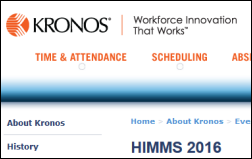
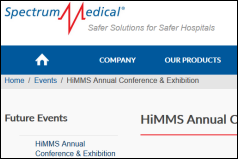
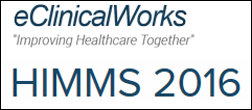
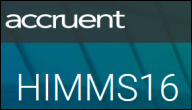
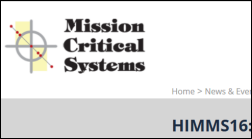
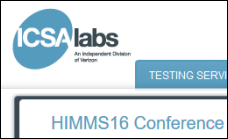
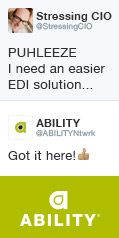
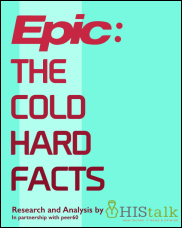
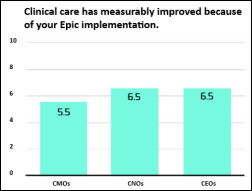
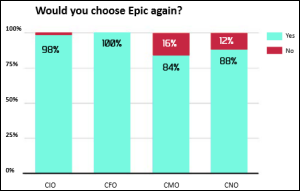
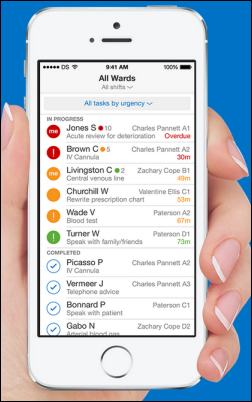



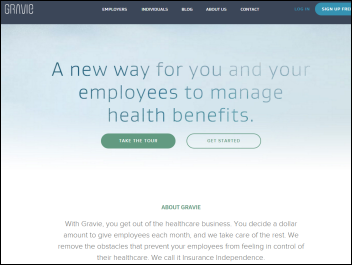

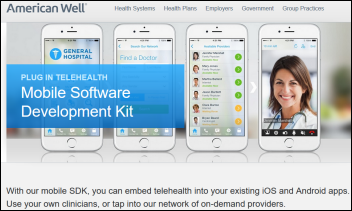
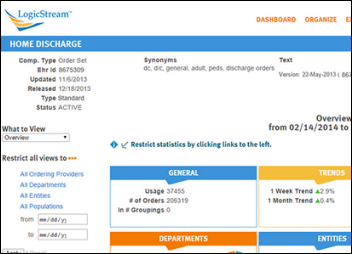
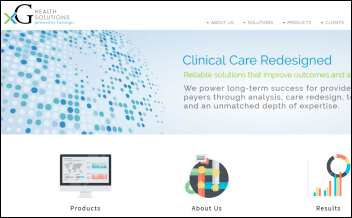


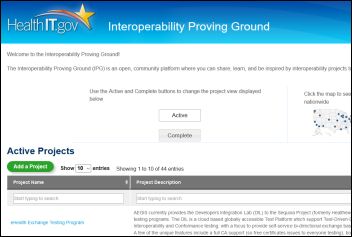
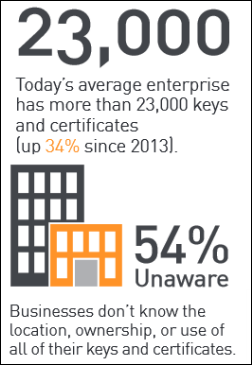
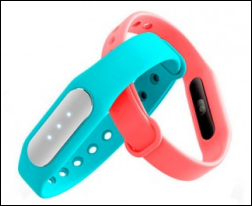
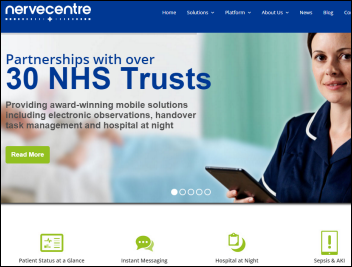
Hey Mr. H,
Enjoyed the “Cold Hard Facts” but wonder about an important constituency – Chief Medical Information Officers. They know as much about the system as CIOs and more about the provider-facing parts. They know as much about using the system to take care of patients as the CMOs do and more about the specific difficulties some providers have with it. It would have been a logical choice to get their opinion. Did you think about them and decide not to ask them? or just not think about them?
Curious
[From Mr H] The CMIO in many cases reports to the CIO, so I felt it would be giving the IT department a “double vote” in polling both of them while avoid such departmental overlap in the other areas like finance and the chief medical officer. I was looking more for perceptions by area rather than by job role.
Is it just me or are all those statements of support for the Precision Medicine initiative seem more like rehashed press releases and statements that are already mandated, e.g., patient access to their records?
This survey on Epic was indeed anonymous. But that doesn’t guarantee that the people who spent 2 or 3 years making the decision to go with Epic, and laid their reputation and careers on the line, and have a vested interest in maintaining the current level of prestige of the system, are going to be eager to say anything that would dislodge Epic from their earned perch on the top of the EHR Market. The people who made the decision to go with Epic are career driven people who have a deeper sense of the value of reputation. As such for them to be completely candid about the value of the most visible and expensive decision they ever made (that will impact their organization’s financial health and reputation for the next decade) is at this juncture very unlikely. What we really need to accurately judge if the large investments in Epic are indeed cost justified is some objective data which again is unlikely given the aforementioned reasons. Nobody in these positions are going allow unfettered access to the data required to make that judgement. Even less likely is if major hospital organizations do internally come to a negative conclusion as to the actual value of their huge investment that they will make a public mea culpa.
We did a broad, anonyomous set of 1-hour interviews with 80 CIOs (1/2 Cerner & 1/2 Epic)… Epic did get dinged for high optimization costs, poor reporting, and seemingly arrogant deployment teams.Cerner was dinged for buggy code, nickel & diming, great vision/ poor execution;and RCM and Ambulatory slowy getting baked, The market has gone Epic (and the lemming rule only goes so far – are all these Epic CIO’s really that dim-witted on the Epic vs Cerner equation?) Do most AMCs use Epic because Cerner is better, or because the guy down the street was doing Epic so I did too? Or maybe the AMC CIO’s are just smart, strategic people. The net-net seemed to be that Cerner is lower cost, but when you factor in time to get in their half-baked upgrades installed and the proposition that Epic upgrades go in quicker with more leap-frogging functionality – after 3-5 years, Epic has a better value ROI. I have no dog in the hunt – I’d like to see 5 killer competitors (Siemens/Sorian – how could you have failed – you had everything going for you). But we are we are… let’s keep pushing for value and innovation – from any quarter.
John@Chilmark it’s not just you….
We can all sing our HIMMS at the zoo watching the HIPPAs…. 🙂
Re: the PA nurse who went to the OR drunk. If the nurse was stumbling around, and had trouble logging in to the computer, why did anyone let it go that far? Sounds like it should have been pretty obvious. Maybe everyone else in the OR that night needs a disciplinary review….
Researcher, a broad set of interviews is just that. Interviews. I am sure they did some quantifying analysis and most certainly they are not dim-witted. I stated clearly Epic earned their place in the market. The lemming rule only would apply to those executives who recently have moved to Epic. My contention is the statements of executives entrenched in an Epic application need to be quantified with actual data based analysis because the motivations to shape perception of their decisions are very public and very strong. Furthermore these opinions and decisions are also driven by the paradigm shift in the way EHR decisions are made. What was once a CFO/CIO decision is rightfully heavily influenced by clinicians. Many clinicians were trained in academic settings dominated by Epic. Settings where again Epic earned their place for a variety of reasons. As such at every site that is going through a vendor search process core groups of physicians (even ones who never used Epic) are demanding that their hospital install Epic. Multiple C-level executives have made it clear to me the pressure to install Epic is formidable and across the board. However when they ask their clinicians to quantify why they are so steadfast in their demand for Epic they can’t come up with an answer that isn’t rooted in opinion.
Pillow talk, I was not responding to your post (I’m guessing both of our posts were pending moderator approval at the same time). I agree with your comments. And, no doubt, my study was inherently subjective. I think we could have a great phone conversation if you’re up for it – I have many more data points I think you’ll find interesting. I left my email with this post; if you’d like to send Mr HISTalk you email address and handle, maybe he’ll have time to connect us.
I would be willing to talk for sure.